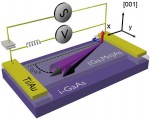GREENBELT Scientists and engineers at NASAs Goddard Space Flight Center have begun to assemble and test the James Webb Space Telescope in advance of its 2018 debut.
A model of the James Webb Space Telescope, said to be 100 times more powerful than the Hubble. (File photo)
At the center, the instruments for the telescope remain in the clean room the central area where scientists are putting it together. Only after taking an air shower and wearing a full-body clean suit and gloves can a scientist enter the area.
Going into the clean room is like going into an operating room, said Ray Lundquist, a Webb telescope systems engineer. The mirrors need to be completely clean to guarantee the highest quality of the images the telescope produces.
The telescope will use four main instruments to detect light from distant galaxies and celestial bodies.
The near infrared camera, provided by the University of Arizona, is the Webb telescopes main camera and will detect light from the earliest galaxies and stars.
The near infrared spectrograph, from the European Space Agency, can analyze the spectrum of 100 objects simultaneously and will assist in studying the temperature, mass and chemical components of celestial bodies.
The mid-infrared instrument, built by European scientists, will be used to detect distant galaxies and newly formed stars.
And the fine guidance sensor/near infrared imager and slitless spectrograph will allow the telescope to point accurately and take high-definition images and discover planets outside the Solar System.
At the heart of the telescope is the 6.5-meter-diameter primary mirror, made up of 18 beryllium segments that are gold-coated to help capture the most remote infrared light.
More here:

